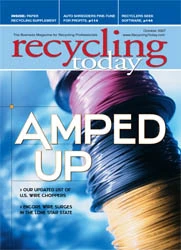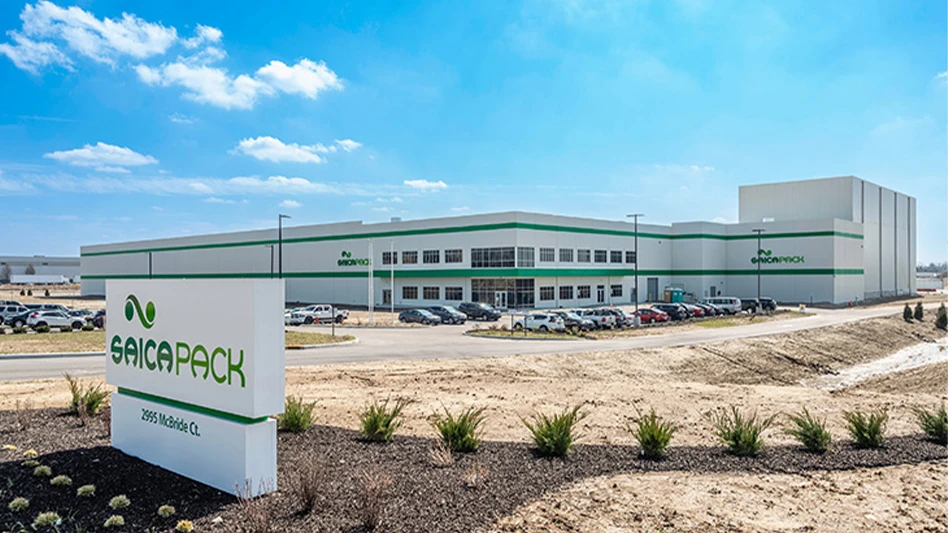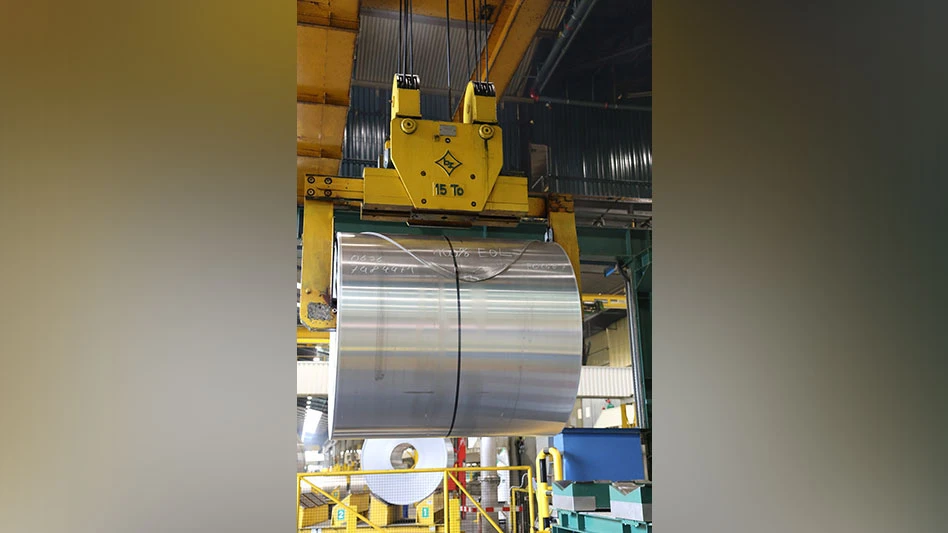Speakers at the Ferrous Roundtable session of the ISRI (Institute of Scrap Recycling Industries Inc.) Commodities Roundtable Forum portrayed a global market hungry for steel and ferrous scrap that will remain in place for the foreseeable future.
A panel of speakers at the event, which took place Sept. 18-20 in Rosemont, Ill., acknowledged that while the industry has experienced some bumps and bruises, it looks like steel and ferrous scrap markets should benefit from healthy domestic and global demand.
|
MSA/RMDASTM MONTHLY FERROUS SCRAP PRICE INDEX |
|
FERROUS PRICING STAYS LOFTY For the second straight month, per-ton pricing for ferrous scrap moved up throughout the United States in September. Pricing moved up from $12 to $22 per ton, depending on the grade and region. Prompt industrial composite grades experienced the biggest bump, moving up from $15 to $22 per ton. Reported regional aggregated spot market prices per gross ton shown for each commodity are based on all Management Science Associates’ (MSA) Raw Material Data Aggregation Service (RMDAS) participants’ actual order data submitted to and processed by MSA as of the 20th of each respective "buy month," rounded to the whole integer. A map of RMDAS regions is available at http://rmdas.msa.com, as is a further explanation of RMDAS methodology and an accompanying disclaimer. No. 2 shredded scrap is defined as containing 0.17 percent or greater copper content. The prompt industrial composite consists of an average of No. 1 bundles and No. 1 busheling. Additional pricing information on each grade can be found at www.RecyclingToday.com. © 2007 Management Science Associates Inc. All rights reserved RMDAS is a trademark of Management Science Associates Inc. |
At the Roundtable, James Wroble, with EAF steelmaker Steel Dynamics, Fort Wayne, Ind., said he had never seen such a good market for beams. While the markets are strong, he pointed out a key reason for the improvement has been the euro’s relative strength compared to the U.S. dollar. "In pure currency terms, a European beam is about 50 percent more expensive today to the U.S. than in 2002. It used to be even with the U.S. dollar. Now it is 1.4 euros to the U.S. dollar."
While extolling the strength of the steel beam market, Wroble also questioned many of the industry forecasts being presented. "Industry forecasts can be wrong and they are often wrong," he stated. He used the example of some forecasted consumption figures during the past two years that were significantly off from the actual numbers. "Not only do we not have an oversupply, we have a large undersupply," he pointed out.
Drew Luntz, who works for Ferrous Processing & Trading (FPT) in Cleveland, Ohio, noted that the scrap industry is changing significantly through consolidations and acquisitions. He noted that when ISRI’s predecessors first merged, there were around 1,800 member companies. By comparison, after this year’s membership drive there were slightly more than 1,450 member companies.
In acknowledging the overall decline in the number of scrap metal recycling firms operating, he touched on family owned businesses that are seeing the newest generation of family members opting to not be involved in the metal recycling business. Several factors were seen as reasons for the demise, including the high cost to operate a scrap metal recycling facility and the higher multiples being offered for the purchase of recycling firms.
Dennis Wilmot, a transportation and logistics operator from WT&L Corp., Aurora, Ohio, spoke of the changing environment for rail transportation. One area he noted was that the number of large railroads, known as Class I, has declined over the past 25 years, with only seven Class I railroads presently operating in the United States. However, despite the sharp decline in the number, an overwhelming percentage of the total shipments (roughly 80 percent) still travel these railroads.
In addressing some trends in the rail transportation side, Wilmot noted a move toward using larger gondola cars, 66-foot or 65-foot gondolas, as compared to 52-foot gondola cars. While railroads are pushing for these, many mills and end consumers are reluctant to handle these cars in light of additional space requirements. "Some older integrated mills are unable to handle 65- or 66-foot gons," he noted.
Michael Locker, president of Locker Associates, a New York-based consultant to the steel and metals business, discussed the growing role that China is playing in the steel industry, noting the steel industry is "in a new comfort zone."
China continues to exceed all expectations, with its production jumping to around 420 million metric tons, with production and demand now accounting for more than one third of the world’s steel output.
Looking at the global demand for steel products, Locker said he expected prices for steel to improve through the rest of 2007. While the slumping residential housing market was a negative, he pointed out that demand from non-residential markets as still healthy, as were heavy equipment and infrastructure demands. Even automotive markets should improve by the end of this year.
He predicted that world prices for steel will stay robust, while U.S. prices should bounce back.
(Additional news about ferrous scrap, including breaking news and consuming industry reports, is available online at www.RecyclingToday.com.)
Get curated news on YOUR industry.
Enter your email to receive our newsletters.

Explore the October 2007 Issue
Check out more from this issue and find your next story to read.
Latest from Recycling Today
- Green Cubes unveils forklift battery line
- Rebar association points to trade turmoil
- LumiCup offers single-use plastic alternative
- European project yields recycled-content ABS
- ICM to host colocated events in Shanghai
- Astera runs into NIMBY concerns in Colorado
- ReMA opposes European efforts seeking export restrictions for recyclables
- Fresh Perspective: Raj Bagaria






